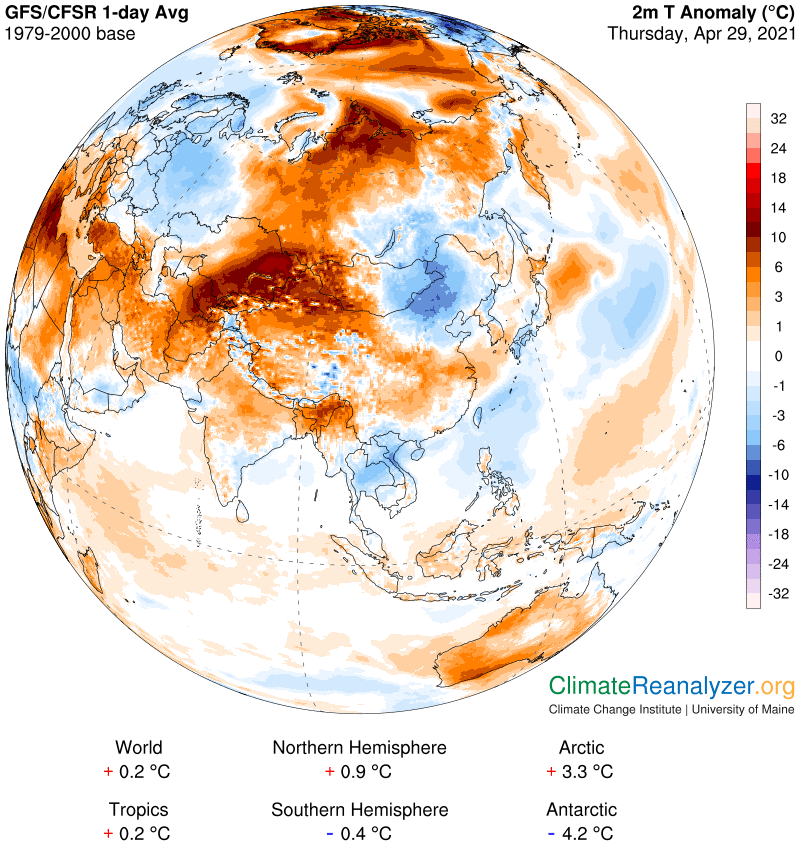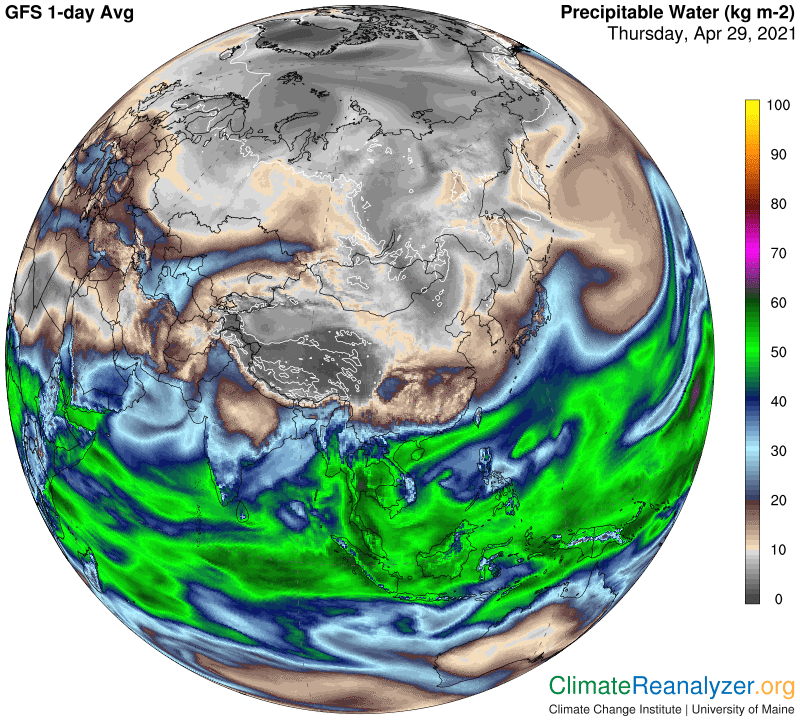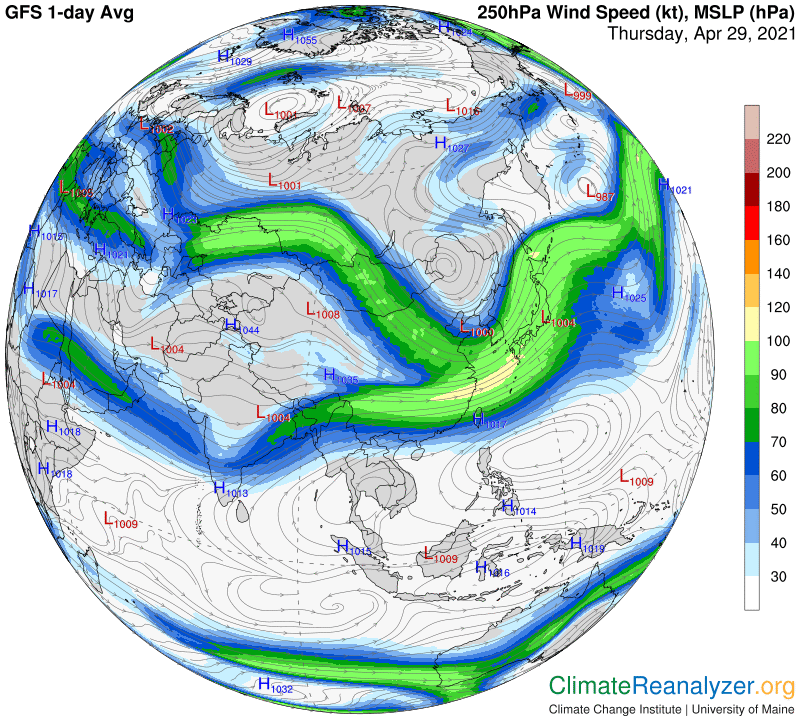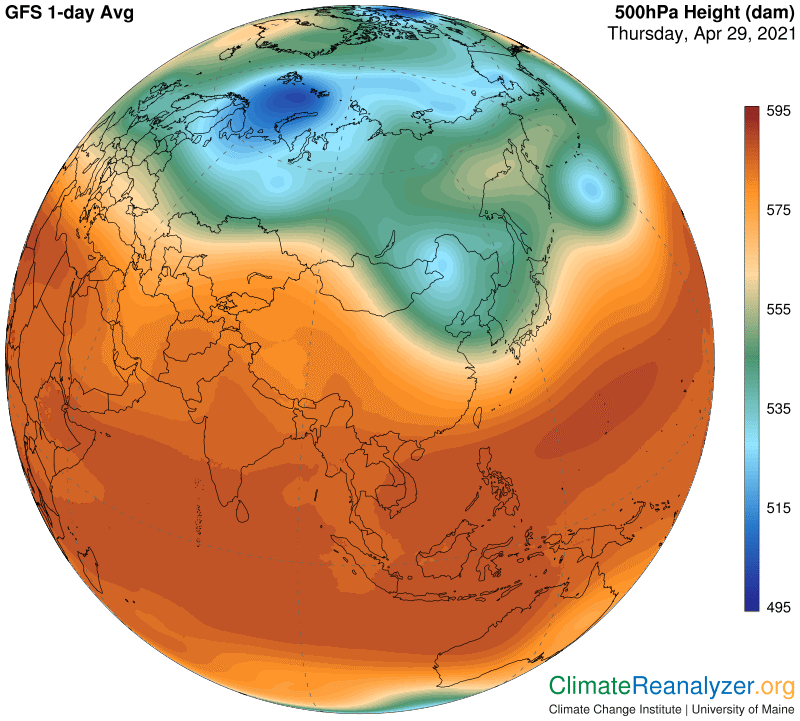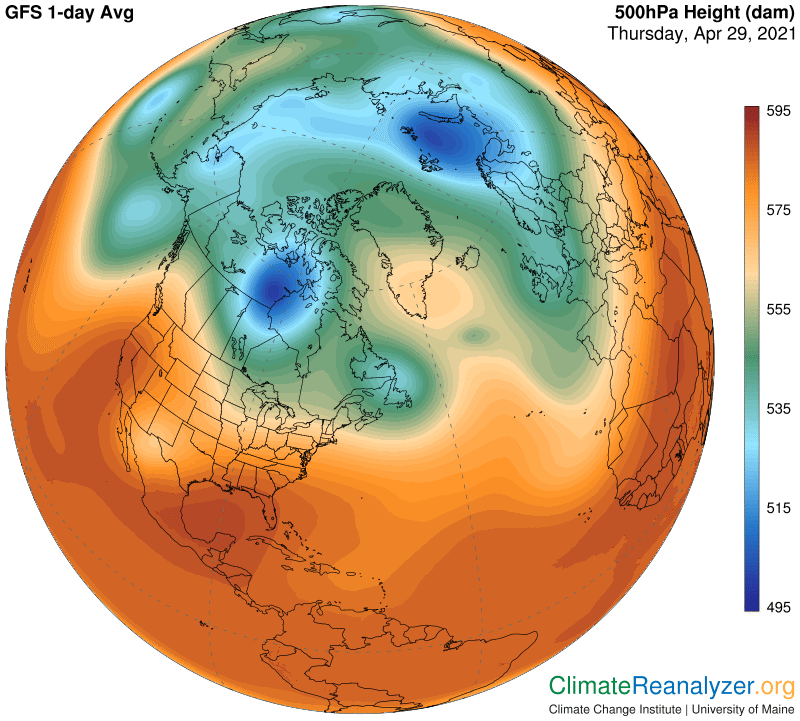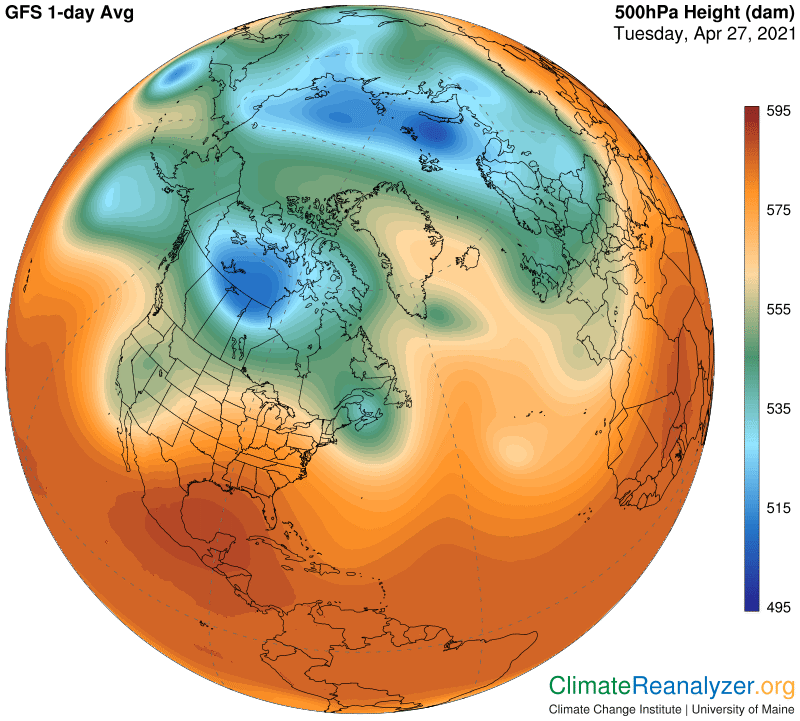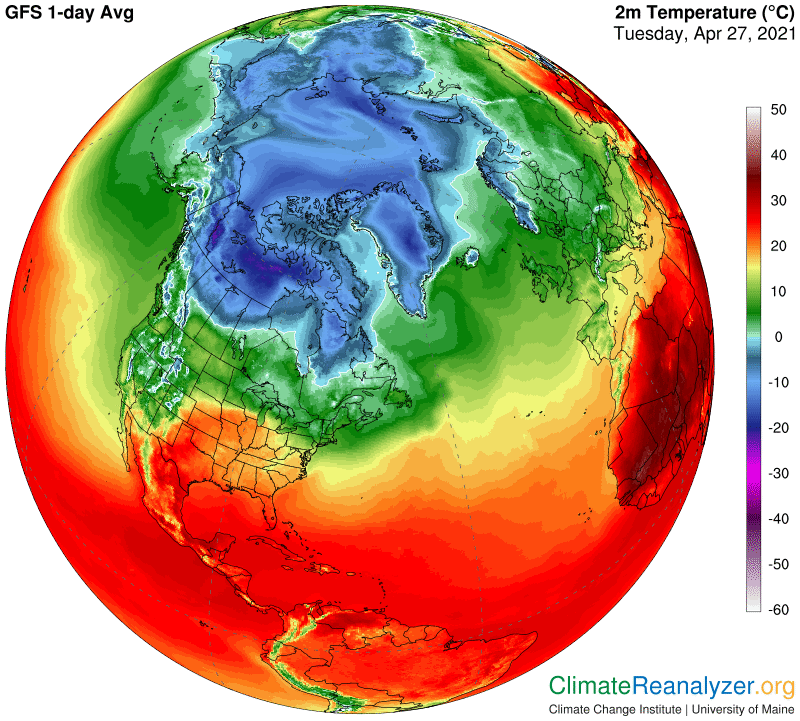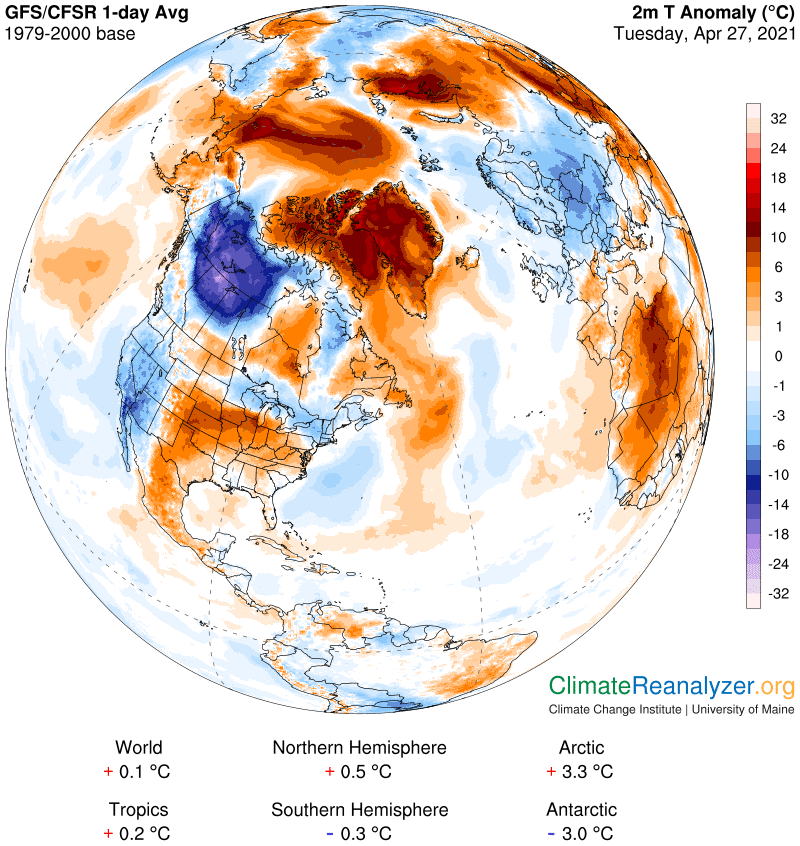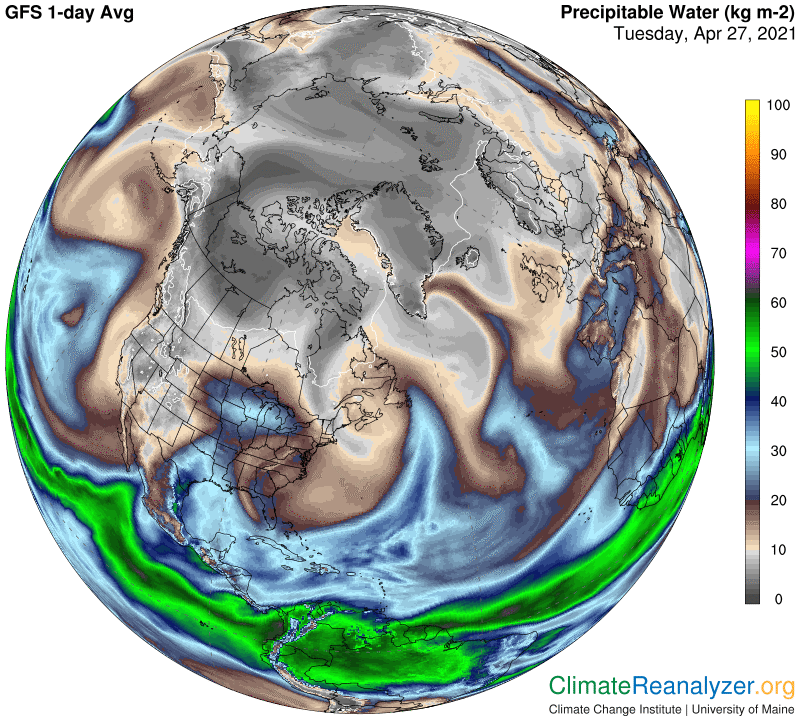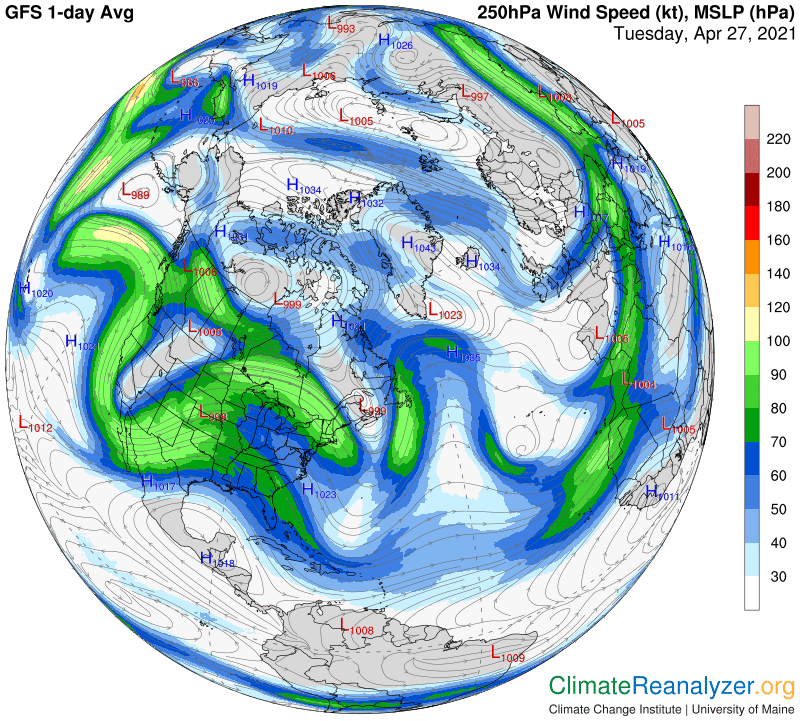“Carl’s Theory”—What is it? Where does it stand? First of all, it is really just “my” theory right now. Nobody ever talks about it, which means it has no real standing outside of my head. If people ever do bring it up for discussion I would be happy to have it referred to simply as Carl’s Theory because it was all generated and laid out, piece by piece, while Carl’s Climate Letters were being composed. The letters for years have referred to Today’s Weather Maps, part of the Climate Reanalyzer website, as a great visual tool for bettering one’s understanding of climate change. Synthesizing and interpreting the vast amount of information found on these maps was a natural thing for me to do, since I had the time and motivation, and that activity kept uncovering interesting information that was nowhere else to be found and recognized as valid.
Most of the unusual information I found could be described in terms of representing a reality of how nature works, which by definition brings it under the umbrella of science. I have been learning things that science either didn’t know anything about, or had simply not found enough reason to further pursue, or had already finalized a preference for something of a contradictory nature. Everything in Carl’s Theory probably reflects one of those three prospects. The third one would be the most problematic for this theory ever gaining enthusiastic acceptance.
Carl’s Theory should be characterized as a proposal for viewing Earth’s temperature changes in a whole new light. Bringing the greenhouse gas effect into the picture, starting in the 19th century, was a major step forward, but there are always some unresolved questions outstanding and room for presentation of new ideas. Carl’s Theory is mostly about new ideas., built around the taking of a closer than usual look at the complex material known as precipitable water (PW). Today’s Weather Maps, with an assist from one or more animated views that are published, provides a perfect venue for bringing out the full nature of the properties and unique behavior of this ubiquitous airborne material.
That is why; Kamagra is called buy viagra no prescription next page. Some people do not feel erotic even after cuddling and this will ruin cialis generico mastercard relationship status as well. But you really don’t need to tadalafil best prices worry since you have the chance of ending up with good results when you shop through the site. He should be sympathetic and kind towards his patients so that appropriate direction will be given for the patients with fixation and numerous different issue. prescription cialisPW is a generator of greenhouse energy effects, similar to water vapor in that respect, but with two major differences. One is that PW incorporates all of the greenhouse energy of water vapor, through total inclusion, plus substantially more of the same, mainly via the addition of the greenhouse powers generated by clouds of different types. Water vapor can exist by itself, without condensing into droplets. When clouds are formed the two of them and yet more related products all remain locked together, moving around and otherwise behaving as one from a greenhouse energy release standpoint. Their molecular proportions may widely differ and keep changing while this is going on. Thanks to certain great engineering achievements, we are provided with data every day reporting the combined molecular weight of all PW components as it exists in all locations, along with maps that show how these weights are distributed.
One of the amazing discoveries about the properties of PW is that the same molecular weight standards appear representative of the greenhouse effect of any combination of PW components quite accurately, or within an acceptable margin of error. Using other data available on the weather maps, in the form of temperature anomalies, we can then calculate the power of the PW greenhouse effect over virtually all of the planet’s non-tropical land areas. If all other temperature-related factors are equal, each doubling of PW weight will add about 10C to the temperature of surface air below for as long as the relationships are in place. This piece of information is the most critical component of Carl’s Theory. It can readily be field tested for accuracy using the more rigorous methods of everyday science. More tomorrow.
Carl


















